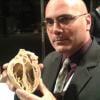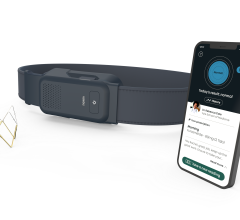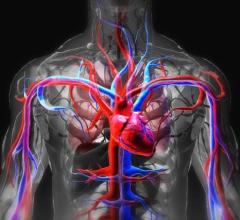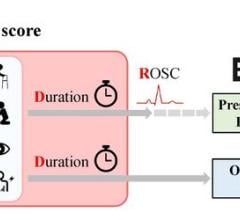As editor of DAIC, I keep a close watch on trends in cardiovascular technology and try to predict what the next big advancements will be in the coming years. Here are my predictions for technologies to watch in the coming year that have the potential to fundamentally change the practice of cardiology:
1. CT-FFR — One technology that is sure to turn heads is computed tomography-fractional flow reserve (CT-FFR), which just gained approval at the end of November. This supercomputing software uses data from a cardiac CT scan to noninvasively assess the FFR measurements for all vessel segments in the coronary tree for patients presenting with chest pain. This includes cumulative distal FFR measurements for segments with numerous or long diffuse lesions. It can pin-point locations of culprit prior to a catheterization and possibly eliminate the need for invasive diagnostic angiograms. The FDA approved the technology after reviewing trials showing close correlation with invasive catheter-based FFR. The technology also enables virtual stenting to show the projected FFR hemodynamic impact. This technology may be a key game changer in how chest pain patients are evaluated and may help significantly cut costs for assessing them in the emergency department.
2. Transcatheter Mitral Valve Replacement (TMVR)— With the use of transcatheter aortic valve replacement now approved in the United States and rapidly expanding, attention is now turning toward the next big frontier of the mitral valve. TMVR will be one of the hottest topics at upcoming cardiology meetings in 2015 and beyond. For more information, read this article on TMVR devices in development.
3. LAA Occluders — The Boston Scientific Watchman left atrial appendage (LAA) occluder is pending final FDA review. If approved, the transcatheter device has the potential to help boost cath lab volumes and eliminate the need for warfarin in atrial fibrillation (AF) patients.
4. Wearable and Personal Heart Health Monitors —The traditional Holter monitor to diagnose patients may rapidly be overtaken with the proliferation of new, inexpensive cardiac monitoring devices. New, small FDA-cleared Holters now use an adhesive backing that sticks to a patient’s chest for home use; wireless monitoring without the need for leads or wearing a clunky device on the belt. Consumer-grade monitors and apps now allow ECGs with atrial fibrillation and other arrhythmia detection to be performed on a smartphone and to be sent to a patient’s doctor from anywhere. These types of technologies will aid in patient engagement and increase the amount of data physicians have available to make a more accurate diagnosis and monitor a patient's ongoing health.
5. Ultrasound Proliferation — Ultrasound is rapidly finding its way into all levels of care beyond traditional echocardiography, from fast point-of-care evaluations with pocket or tablet ultrasound, to use of 3-D/4-D transesophageal echo (TEE) to guide increasingly more complex interventional procedures.
6. Bioresorbable Stents — While traditional metallic stents are the workhorse today, I suspect they will become a thing of the past in the coming years. The flow of clinical data on bioresorbable stents continues to be universally positive. In 2014 bioresorbable stents were shown to be non-inferior to the top metallic stent on the market and new evidence shows they may help reduce angina in PCI patients.
7. Radiation Dose Lowering Technologies — Due in part by guidelines now required by the Joint Commission and legislation in some states, X-ray imaging radiation safety has come to the forefront. There have been numerous technologies introduced recently to reduce dose from CT and angiography by increasing the image quality from lower dose scans and improved detector technology. Additionally, recording a patient’s dose, as well as real-time monitoring of cath lab staff dose, will not only become more common, but may soon be a requirement.
8. Improved Atrial Fibrillation Management — There has been increased focus in the past few years on better treatment for AF. In addition to increased use of ICDs, new techniques to better map and pinpoint the source of AF promise to cut catheter ablation procedure times to a third or less of what they are currently and make the treatment much more effective.
9. Preventing Heart Failure — The expanded use of ICDs and new transcatheter and minimally invasive structural heart devices will significantly reduce or reverse the progression of heart failure in the years to come.
10. Enterprise Imaging — The current IT model of PACS and department-specific reporting and image storage systems will rapidly be replaced in the near future. By using a central vendor neutral archive (VNA) managed by IT, all departments can store their data and images in one location, instead of numerous, disparate silos that fail to interoperate. The VNA model will enable remote access to patient information, images and waveforms from anywhere remotely through the patient’s EMR, and open the doors to connectivity with regional health information exchanges.
If looking to the recent past for trends is any indication of what the future may hold, you may have interest in pursuing the list of the most popular content on DAIC’s website over the course of 2014. Click here for a list of the most accessed news and archive content.



 March 25, 2025
March 25, 2025 








